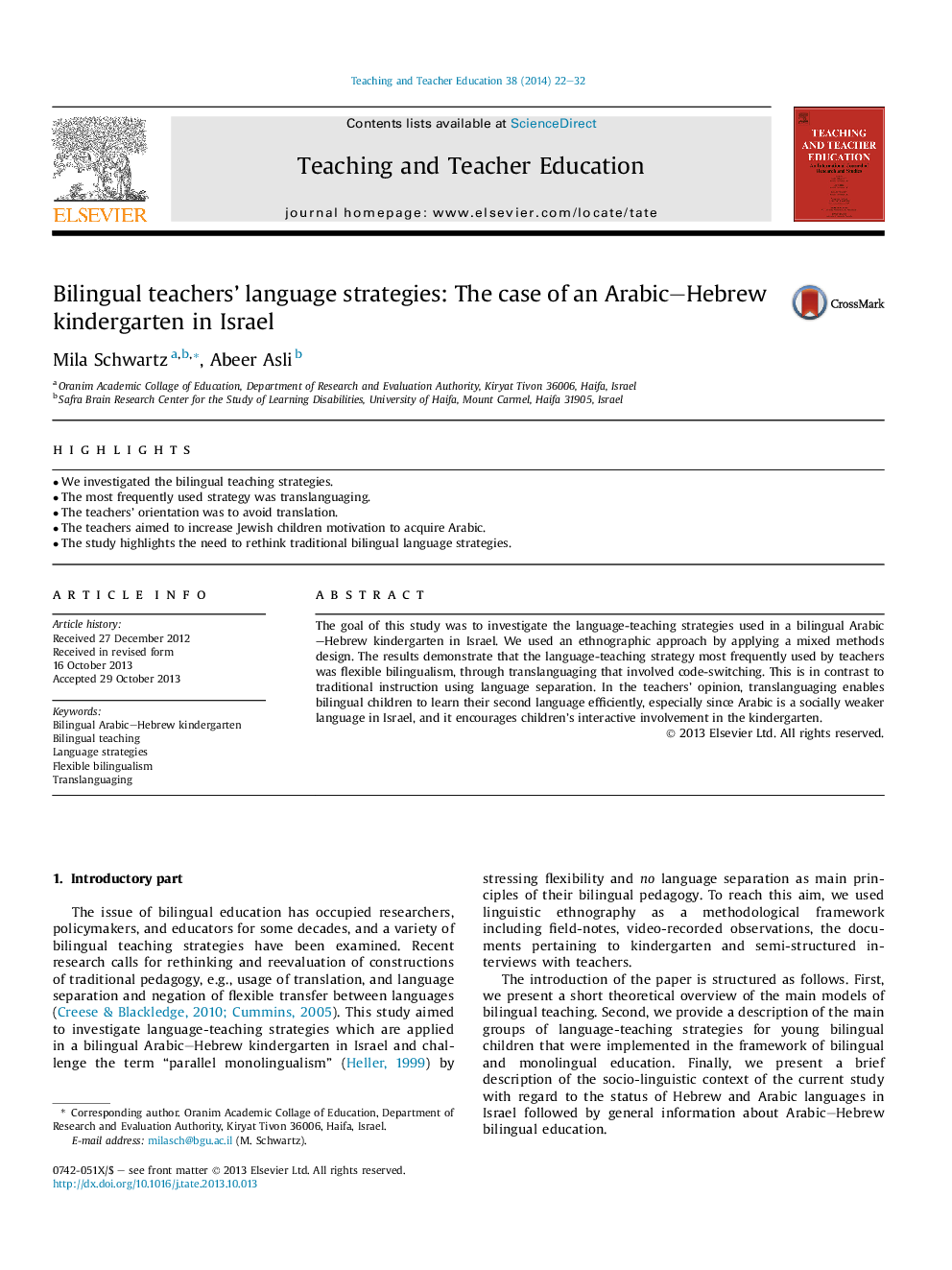| Article ID | Journal | Published Year | Pages | File Type |
|---|---|---|---|---|
| 374031 | Teaching and Teacher Education | 2014 | 11 Pages |
•We investigated the bilingual teaching strategies.•The most frequently used strategy was translanguaging.•The teachers' orientation was to avoid translation.•The teachers aimed to increase Jewish children motivation to acquire Arabic.•The study highlights the need to rethink traditional bilingual language strategies.
The goal of this study was to investigate the language-teaching strategies used in a bilingual Arabic–Hebrew kindergarten in Israel. We used an ethnographic approach by applying a mixed methods design. The results demonstrate that the language-teaching strategy most frequently used by teachers was flexible bilingualism, through translanguaging that involved code-switching. This is in contrast to traditional instruction using language separation. In the teachers' opinion, translanguaging enables bilingual children to learn their second language efficiently, especially since Arabic is a socially weaker language in Israel, and it encourages children's interactive involvement in the kindergarten.
